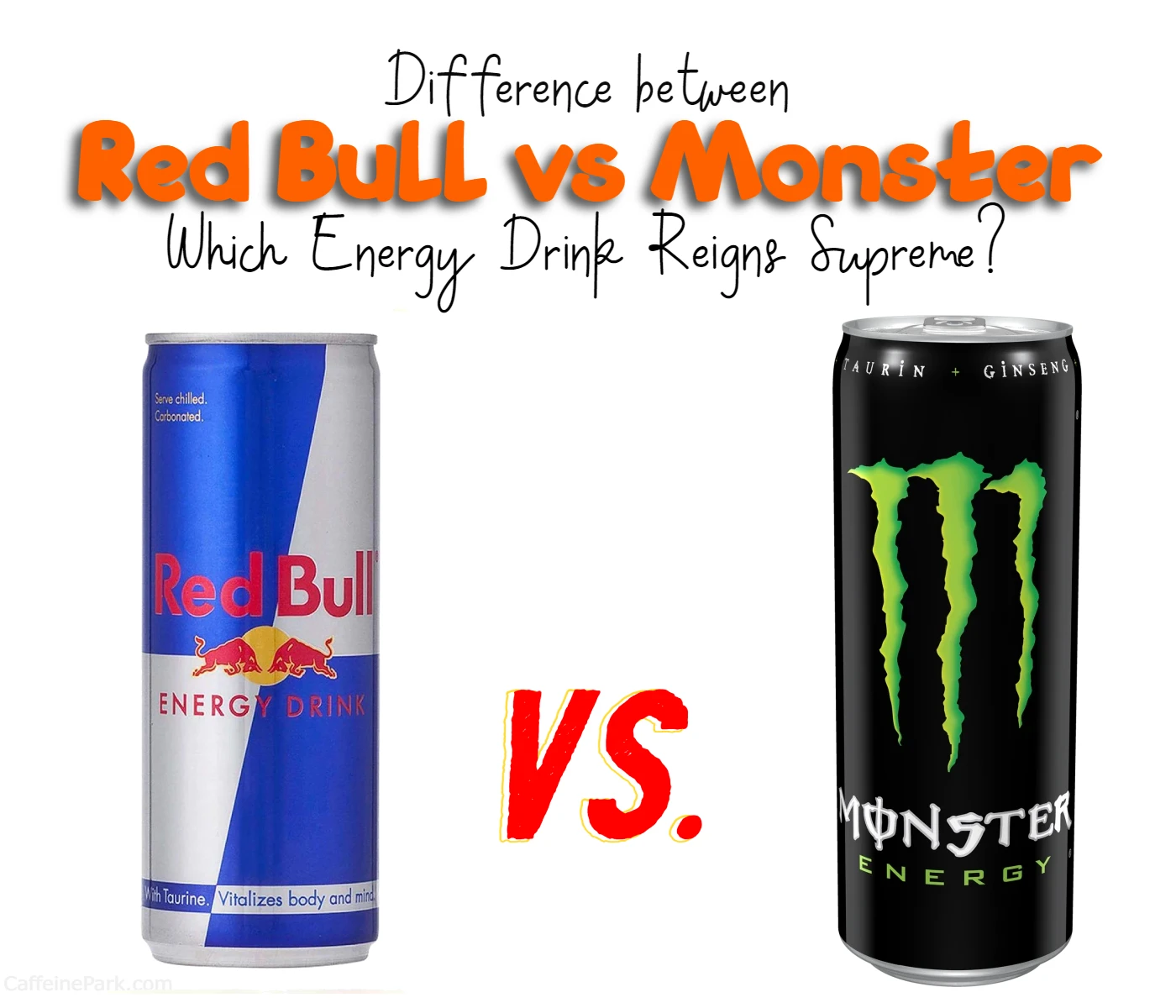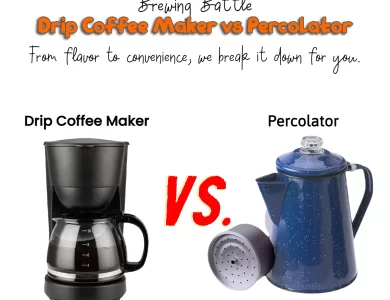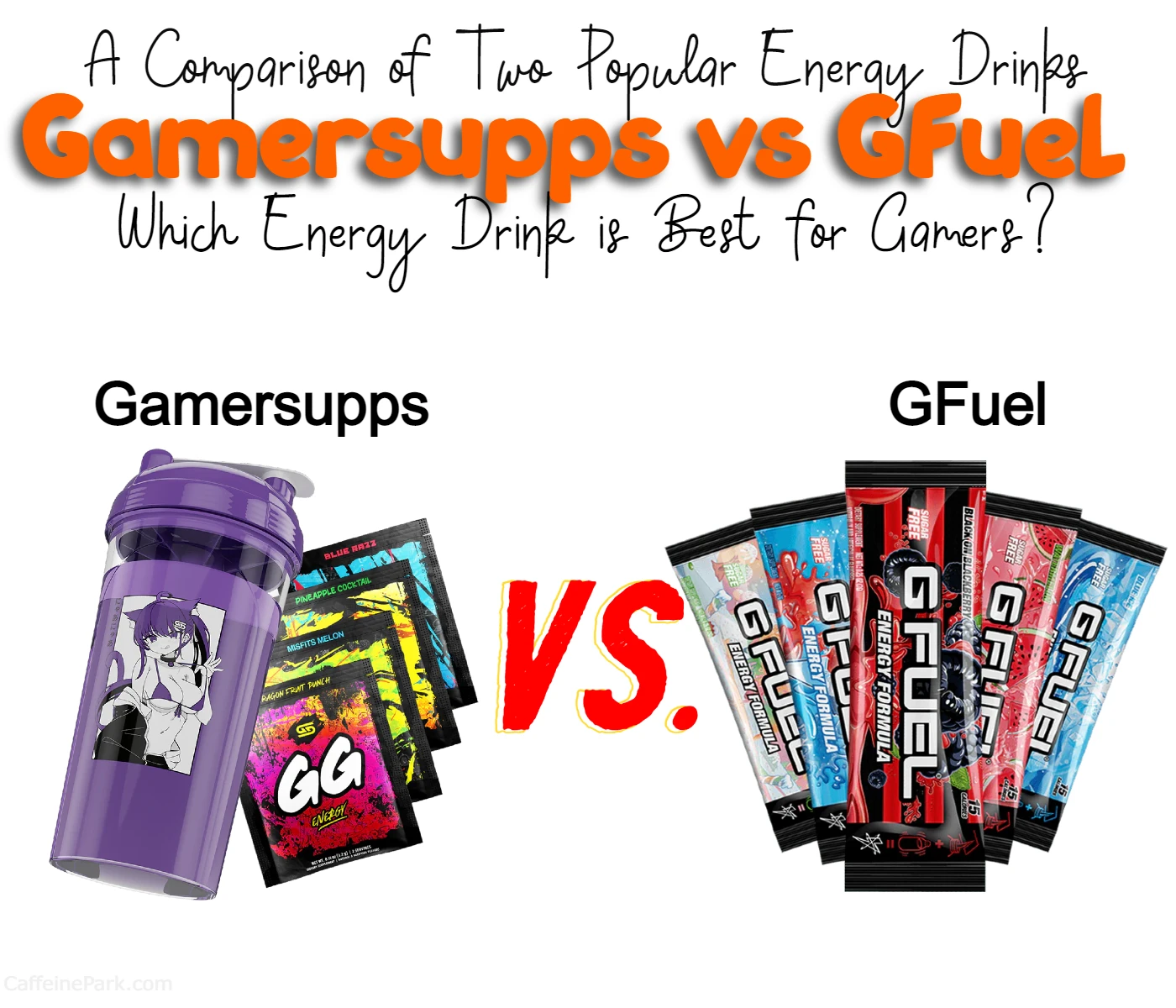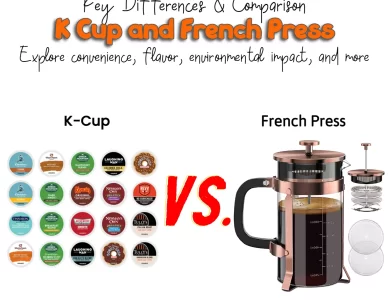
If you’re anything like me, you’ve probably reached for one of these beverages when you need a quick energy boost to power through a busy day or long night. But have you ever stopped to wonder which one is truly the best? In this blog, we’ll be taking a deep dive into the differences between Red Bull and Monster to help you make an informed decision about which one is right for you. We’ll cover everything from taste to caffeine content to potential side effects, so you can be confident in your choice. Whether you’re a die-hard fan of one of these drinks or have never tried them before, this is the place to be.
So, grab a can of your favorite energy drink, sit back, and get ready to learn everything you need to know about Red Bull and Monster. And don’t forget to read to the end of the blog for my final verdict and recommendations on which one to choose. Let’s get started! Here is a chart that compares some key aspects of Red Bull and Monster:
| Feature | Red Bull | Monster Energy |
|---|---|---|
| Origin | Austria, 1987 | United States, 2002 |
| Logo | Two red bulls charging at each other | The letter “M” clawed by three green gashes |
| Can Size | 8.4 fl.oz (250ml) | 16 fl.oz (473ml) |
| Can Design | Sleek and compact, predominantly blue and silver | Bold and colorful, with unique designs for each flavor |
| Flavor Varieties | Limited range with focus on the original flavor | Extensive variety with frequent new releases |
| Taste | Slightly sweeter and tangier | Stronger and more intense |
| Ingredients | Caffeine, taurine, B-vitamins, sugars, carbonated water | Caffeine, taurine, B-vitamins, ginseng, L-carnitine, guarana, natural and artificial flavorings and sweeteners |
| Caffeine Content (per serving) | 80mg per 8.4oz can | Regular and sugar-free variants are available |
| Caloric Value (per serving) | Approximately 110 calories | Approximately 210-230 calories |
| Market Share and Global Presence | Strong global presence with products available in over 170 countries | Distributed in over 90 countries with a growing presence |
| Branding and Marketing | “Gives you wings” – Focus on extreme sports and high-performance | “Unleash the Beast” – Appeals to rebellious and adventurous lifestyle |
| Price and Affordability | Often carries a premium price | More budget-friendly pricing |
| Availability and Distribution | Extensive distribution network | Expanding presence, available in numerous regions |
| Packaging Innovations | Limited-edition cans occasionally released | Frequent limited-edition designs with unique artwork |
| Target Audience | Active and adventurous individuals, athletes | Younger consumers seeking rebellion and excitement |
| Sugar and Sugar-Free Variants | 27g per 8.4oz can in Regular and sugar-free variants are available | 27g-56g depending on the flavor and sugar-free variants available |
| Environmental Initiatives | Invested in renewable energy projects and sustainable practices | Committed to improving sustainability and eco-conscious initiatives |
| Legal and Health Controversies | Faced legal challenges over marketing claims | Controversies related to marketing to children and high caffeine content |
| Cultural Differences in Consumption | Strong presence in European markets | Popular in the United States and select European countries |
| Market Challenges and Future Outlook | Maintaining market dominance and appeal to younger generations | Competing against other energy drink brands |
| Health Considerations | Consume in moderation, avoid excessive caffeine intake | Consume in moderation, especially for caffeine-sensitive individuals |
| Sponsorships and Partnerships | Extensive sponsorships in extreme sports and motorsports | Partnerships with a wide range of sports and cultural events |
| Global Impact | Iconic and well-established globally | Rapidly expanding global presence and recognition |
Differences Between Red Bull and Monster
History and Origins
Red Bull: This iconic energy drink was born in Austria back in 1987, making it one of the pioneers in the energy drink market. The brand’s founder, Dietrich Mateschitz, discovered a similar tonic drink in Thailand called “Krating Daeng,” which served as the inspiration for Red Bull. Mateschitz partnered with Thai businessman Chaleo Yoovidhya to create a new formula tailored for Western tastes. With its distinct flavor and potent caffeine kick, Red Bull quickly gained traction and became a global phenomenon.
Monster: On the other hand, Monster Energy had a relatively later start, emerging in the United States in 2002. Hansen Natural Corporation, the creator of Monster, already had experience in the beverage industry, but it was with Monster Energy that they achieved their breakthrough. The brand took a more rebellious and edgy marketing approach, targeting the younger audience with its edgy logo and larger-than-life cans. This strategy paid off, and Monster rapidly grew in popularity, challenging Red Bull’s dominance in the market.
Taste
When it comes to taste, both Red Bull and Monster have their own distinct flavors. Red Bull has a sweet, slightly tangy taste that’s hard to describe. Some people compare it to a cross between bubblegum and medicine. Monster, on the other hand, has a more pronounced fruity taste. Some people say it tastes like a mix of citrus and tropical flavors. Both drinks are carbonated, and some people find them to be a little too sweet.
Caffeine Content and Caloric Value
Red Bull: As mentioned earlier, Red Bull contains 80mg of caffeine per 8.4 fl.oz (250ml) can. Additionally, an 8.4 fl.oz (250ml) serving of Red Bull provides about 110 calories, primarily from its sugar content.
Monster: Monster Energy, with its larger 16 fl.oz (473ml) can, contains approximately 160mg of caffeine per serving. Due to its bigger size, a can of Monster has a higher caloric value than Red Bull, typically ranging from 210 to 230 calories.
| Aspect | Red Bull | Monster |
|---|---|---|
| Caffeine Content (per serving) | Approximately 80mg | Approximately 160mg |
| Caloric Value (per serving) | Approximately 110 calories | Approximately 210-230 calories |
Branding and Packaging
Red Bull: One of the factors that significantly contributed to Red Bull’s success is its brilliant branding and iconic logo. The logo features two charging red bulls, which symbolize energy and power. This emblem is simple, recognizable, and has become synonymous with the brand. Red Bull’s packaging is also distinctive, with its slim 8.4 fl.oz (250ml) can, predominantly in blue and silver colors. The compact size makes it easy to carry, making it a favorite for those seeking a quick energy boost on the go.
Monster: Monster Energy went for a bolder and more vivid branding. Their logo showcases the letter “M” clawed by three green gashes, representing the three original flavors of the drink. Unlike Red Bull’s sleek can design, Monster opted for a larger 16 fl.oz (473ml) can with vibrant colors and intricate artwork, often featuring unique designs for each flavor variant. This choice not only appeals to their target market but also allows them to offer more beverage content per purchase.
| Red Bull | Monster | |
|---|---|---|
| Logo | Two red bulls charging at each other | The letter “M” clawed by three green gashes |
| Can Size | 8.4 fl.oz (250ml) | 16 fl.oz (473ml) |
| Can Design | Sleek and compact, predominantly blue and silver | Bold and colorful, with unique designs for each flavor |
Flavor Varieties
Red Bull: Despite being one of the first energy drinks, Red Bull has a somewhat limited range of flavors. Over the years, the company has introduced a few variants, but the original Red Bull flavor remains the most popular and widely available. They focused on perfecting the taste of the original formula, and their strategy revolves around consistency and brand loyalty.
Monster: In contrast, Monster Energy boasts an impressive array of flavors, catering to a diverse consumer base. They continuously innovate and release new variants, often collaborating with popular brands or celebrities to create limited editions. This approach keeps their offerings fresh and exciting, appealing to consumers who enjoy experimenting with different taste experiences.
Ingredients
Red Bull: A crucial aspect that sets these energy drinks apart lies in their ingredients. Red Bull’s formula consists of caffeine, taurine, B-vitamins, sugars, and carbonated water. Taurine is an amino acid that occurs naturally in the human body and plays a role in various biological processes. While the exact amount of caffeine is not specified, one 8.4 fl.oz (250ml) can typically contains about 80mg of caffeine.
Monster: Monster Energy, on the other hand, packs a more extensive list of ingredients, which includes caffeine, taurine, B-vitamins, ginseng, L-carnitine, guarana, and various other natural and artificial flavorings and sweeteners. Notably, Monster contains a higher caffeine content compared to Red Bull, with an average of 160mg per 16 fl.oz (473ml) can.
| Red Bull | Monster | |
|---|---|---|
| Caffeine Content (per 8.4 fl.oz/250ml) | Approximately 80mg | – |
| Caffeine Content (per 16 fl.oz/473ml) | – | Approximately 160mg |
Red Bull: Being one of the pioneering energy drinks, Red Bull has enjoyed a significant head start and established a strong foothold in the global market. The brand has consistently maintained a substantial market share, and its products are available in more than 170 countries. Red Bull’s extensive marketing campaigns, including sponsorships of extreme sports events and athletes, have played a crucial role in its worldwide recognition.
Monster: Despite its relatively later entry into the market, Monster Energy quickly caught up and even surpassed Red Bull in some regions. Monster’s “Unleash the Beast” slogan and their targeted advertising campaigns have resonated with younger consumers, propelling the brand to substantial success. As a result, Monster Energy drinks are now distributed in over 90 countries, making it a formidable competitor to Red Bull’s global dominance.
Sponsorships and Partnerships
Red Bull: Red Bull is renowned for its strategic sponsorships and partnerships, particularly in the world of extreme sports and motorsports. They have supported and associated themselves with famous athletes, teams, and events, reinforcing their image as a drink for high-performance individuals. Some of the most well-known sponsorships include Red Bull Racing in Formula 1 and the Red Bull Air Race.
Monster: Monster Energy has also actively engaged in sponsorships and collaborations but has taken a slightly different approach. Their partnerships span a wide range of sports, including motocross, skateboarding, and mixed martial arts (MMA). Additionally, they’ve sponsored several music festivals and gaming events, reaching out to various subcultures and niche communities.
Marketing Strategy
Red Bull: Red Bull’s marketing strategy centers around the concept of “giving you wings” – that is, providing consumers with an energy boost to accomplish their goals and passions. They focus on creating compelling and adrenaline-pumping content through sponsorships, branded events, and extreme sports collaborations. By associating the brand with excitement and daring feats, Red Bull has cultivated a loyal customer base that identifies with their aspirational messaging.
Monster: Monster Energy, known for its edgy and rebellious image, taps into the idea of “unleashing the beast” within consumers. They target thrill-seekers and individuals seeking an energy boost to enhance their performance. Monster’s marketing heavily relies on social media, influencers, and targeted advertising to connect with their younger audience and maintain their position as a trendsetter in the energy drink industry.
Legal and Health Controversies
Red Bull: Over the years, Red Bull has faced some legal challenges regarding its marketing claims. Some countries have taken issue with the company’s claim that “Red Bull gives you wings,” leading to lawsuits and settlements. Additionally, like any caffeinated beverage, Red Bull can potentially pose health risks if consumed excessively or by certain individuals with sensitivities to caffeine.
Monster: Similarly, Monster Energy has encountered legal issues related to its marketing practices and caffeine content. Some have criticized their marketing campaigns for allegedly targeting children and young teenagers, leading to regulatory scrutiny. Additionally, concerns about the high caffeine levels in Monster drinks have prompted health experts to caution against excessive consumption.
Target Audience
Red Bull: Red Bull’s target audience mainly consists of active and adventurous individuals, particularly those who participate in extreme sports and lead a fast-paced lifestyle. Their marketing efforts have successfully attracted thrill-seekers, athletes, and young adults looking for an energy boost to stay focused and perform at their best.
Monster: Monster Energy has a similar target audience, although their marketing is especially effective at appealing to younger consumers seeking a sense of rebellion and excitement. They have successfully tapped into the gaming community and other subcultures, expanding their reach beyond just sports enthusiasts.
Price and Affordability
Red Bull: Being one of the pioneering energy drink brands, Red Bull often carries a premium price tag compared to other energy drink options. The higher cost can be attributed to its well-established brand reputation, extensive marketing campaigns, and global presence. While some consumers are willing to pay a premium for the perceived quality and taste, others might find it less affordable for regular consumption.
Monster: Monster Energy, known for its larger can sizes and competitive pricing, tends to be more budget-friendly than Red Bull. This pricing strategy has been a significant factor in attracting a broader consumer base, including students and budget-conscious individuals. The affordability of Monster drinks has contributed to its popularity among younger consumers who seek an energy boost without breaking the bank.
Availability and Distribution
Red Bull: Thanks to its early entry into the market and its massive success, Red Bull enjoys wide availability across the globe. The brand’s extensive distribution network ensures that Red Bull products can be found in convenience stores, supermarkets, gas stations, and even vending machines in numerous countries. This accessibility makes it easy for consumers to grab a can whenever they need a quick energy boost.
Monster: While Monster Energy’s distribution network is not as extensive as Red Bull’s, it has made significant strides in expanding its presence. Monster has been actively working to increase its availability in various regions, leveraging its partnerships with beverage distributors and retailers. As a result, Monster drinks are now more widely accessible in many countries, especially in the United States.
Packaging Innovations
Red Bull: Throughout its history, Red Bull has maintained a relatively consistent packaging design. The slim 8.4 fl.oz (250ml) can with its signature blue and silver colors remains a hallmark of the brand. However, Red Bull has occasionally introduced limited-edition cans with special designs, often tied to specific events or promotions, appealing to collectors and enthusiasts.
Monster: Monster Energy is known for its innovative and ever-changing packaging designs. The brand frequently releases limited-edition cans featuring unique artwork, collaborations, or tie-ins with popular movies, video games, or music artists. This approach adds an element of collectibility to their products and keeps consumers curious about what’s coming next.
Cultural Differences in Consumption
Red Bull: Given its Austrian origins, Red Bull has a strong presence in European markets, and it remains a popular choice in many European countries. The brand’s association with extreme sports, motorsports, and adventure aligns well with the active and adventurous lifestyle embraced by many Europeans.
Monster: Monster Energy has found significant success in the United States and other regions around the world, including certain European countries. Its vibrant branding and focus on youth culture have resonated well with American consumers and the younger demographic in other regions.
Sugar and Sugar-Free Variants
Red Bull: The original Red Bull energy drink contains sugar as one of its main ingredients, contributing to its distinct taste and caloric content. However, in response to growing consumer demand for healthier options, Red Bull has introduced sugar-free variants. These sugar-free options aim to cater to health-conscious individuals who seek an energy boost without the additional calories from sugar.
Monster: Like Red Bull, Monster Energy offers both regular and sugar-free variants. In recent years, they have expanded their range of sugar-free options to provide a broader selection for consumers who are mindful of their sugar intake.
| Red Bull | Monster | |
|---|---|---|
| Sugar Content in Regular Variants | Yes | Yes |
| Sugar-Free Variants Available | Yes | Yes |
Environmental Initiatives
Red Bull: Red Bull has made strides in implementing various environmental initiatives to reduce its carbon footprint. The company has invested in renewable energy projects, eco-friendly packaging materials, and sustainable sourcing practices for ingredients. Moreover, they actively promote recycling and proper waste management.
Monster: Similarly, Monster Energy has undertaken measures to address environmental concerns. The company has committed to improving the sustainability of its operations, including recycling initiatives and eco-conscious packaging decisions.
Market Challenges and Future Outlook
Red Bull: As a longstanding industry leader, Red Bull faces the challenge of maintaining its market dominance in the face of competition from other energy drink brands. To address this, they might need to continue investing in marketing and innovation to stay relevant and appeal to younger generations.
Monster: While Monster Energy has significantly grown in popularity, it continues to face fierce competition from other energy drink brands, including Red Bull. The company’s ability to maintain its market share and expand its presence in new markets will determine its future success.
Health Considerations
Red Bull: Like all caffeinated beverages, Red Bull should be consumed in moderation. Individuals sensitive to caffeine or those with certain health conditions should exercise caution when consuming energy drinks. Pregnant women and children are among those who are advised to limit their caffeine intake.
Monster: The same health considerations apply to Monster Energy as well. The higher caffeine content in Monster drinks means that consumers should be mindful of their intake, especially if they have sensitivity to caffeine or health conditions that may be affected by it.
Red Bull or Monster: Which One Should You Choose?
Choosing between Red Bull and Monster Energy ultimately depends on your personal preferences, lifestyle, and specific needs. Both energy drink brands offer unique characteristics that cater to different consumer tastes. To help you make an informed decision, consider the following factors:
- Flavor Preference: If you prefer a classic and straightforward taste, Red Bull’s original flavor might be more appealing to you. On the other hand, if you enjoy a wide variety of flavors and like experimenting with new taste experiences, Monster Energy’s extensive flavor range may be a better fit.
- Caffeine Tolerance: Consider your sensitivity to caffeine. Red Bull generally contains approximately 80mg of caffeine per serving, while Monster Energy packs a higher caffeine punch with around 160mg per serving. If you are sensitive to caffeine or want to limit your intake, Red Bull may be a more suitable option.
- Caloric Intake: If you are mindful of your caloric intake, note that Monster Energy’s larger can size typically contains more calories compared to Red Bull. If you’re looking for a lower-calorie option, you might lean towards Red Bull’s smaller can size.
- Budget and Affordability: Monster Energy tends to have a more budget-friendly pricing strategy, making it attractive to consumers seeking a cost-effective energy drink. If affordability is a significant factor for you, Monster might be the way to go.
- Brand Image and Target Audience: Consider the branding and image that resonates with you. Red Bull’s association with extreme sports and high-performance lifestyles may appeal to thrill-seekers and athletes. In contrast, Monster Energy’s edgy and rebellious image might be more appealing if you identify with a younger, adventurous demographic.
- Availability: Check the availability of both brands in your region. Red Bull’s extensive global distribution network means it is more likely to be found in various countries. However, Monster Energy has been rapidly expanding its presence, making it increasingly accessible in many regions.
- Environmental and Health Considerations: Take into account any environmental or health concerns. Both brands have taken steps towards sustainability and offer sugar-free options for health-conscious consumers. Remember to consume energy drinks in moderation, especially if you have caffeine sensitivities or health conditions affected by caffeine.
Ultimately, the best choice between Red Bull and Monster Energy comes down to your personal taste preferences, caffeine tolerance, lifestyle, and priorities. It’s essential to enjoy energy drinks responsibly and be mindful of your overall health and well-being. If possible, try both brands and see which one aligns better with your energy-boosting needs and fits your lifestyle. Remember, a balanced diet and healthy lifestyle are the key to sustained energy and well-being.
FAQs
The main difference between Red Bull and Monster Energy lies in their caffeine content and can sizes. Red Bull typically comes in a slim 8.4 fl.oz (250ml) can with approximately 80mg of caffeine per serving. In contrast, Monster Energy offers a larger 16 fl.oz (473ml) can with approximately 160mg of caffeine per serving. This makes Monster Energy drinks contain twice the amount of caffeine compared to Red Bull.
Yes, there are differences in the flavor varieties of these energy drinks. Red Bull tends to have a more limited range of flavors, with a primary focus on its original flavor. On the other hand, Monster Energy boasts an extensive variety of flavors, constantly introducing new variants and limited editions. This variety appeals to consumers who enjoy trying different taste experiences.
Red Bull contains 80mg of caffeine per 8.4oz can, while Monster contains 160mg of caffeine per 16oz can. However, it’s worth noting that some flavors of both brands may have slightly different caffeine content.
Yes, there are differences in taste between the two brands. Red Bull has a slightly sweeter and tangier flavor, while Monster is known for its stronger, more intense taste. Of course, the taste is subjective, so it’s worth trying both to see which one you prefer.
Yes, both drinks have potential negative side effects, particularly if consumed in excess or if you have a preexisting heart condition or sensitivity to caffeine. Some common side effects may include jitters, anxiety, and increased heart rate.
No, energy drinks should not be relied upon as a replacement for sleep or as a long-term source of energy. While they can provide a quick energy boost, it’s important to address the root cause of your fatigue and make lifestyle changes to improve your overall energy levels.
Generally, Red Bull carries a premium price compared to Monster Energy. Red Bull’s well-established brand reputation and extensive marketing efforts contribute to its higher cost. On the other hand, Monster Energy’s larger can size and competitive pricing make it a more budget-friendly option for consumers.
Red Bull has a strong global presence, with its products available in over 170 countries. The brand’s early entry into the market and successful marketing campaigns have contributed to its wide distribution network. Monster Energy, while not as extensive as Red Bull’s, has rapidly expanded its global reach and is now distributed in over 90 countries, especially in the United States and select European countries.
Read More:
Contents
- Differences Between Red Bull and Monster
- History and Origins
- Taste
- Caffeine Content and Caloric Value
- Branding and Packaging
- Flavor Varieties
- Ingredients
- Market Share and Global Presence
- Sponsorships and Partnerships
- Marketing Strategy
- Legal and Health Controversies
- Target Audience
- Price and Affordability
- Availability and Distribution
- Packaging Innovations
- Cultural Differences in Consumption
- Sugar and Sugar-Free Variants
- Environmental Initiatives
- Market Challenges and Future Outlook
- Health Considerations
- Red Bull or Monster: Which One Should You Choose?
- FAQs





